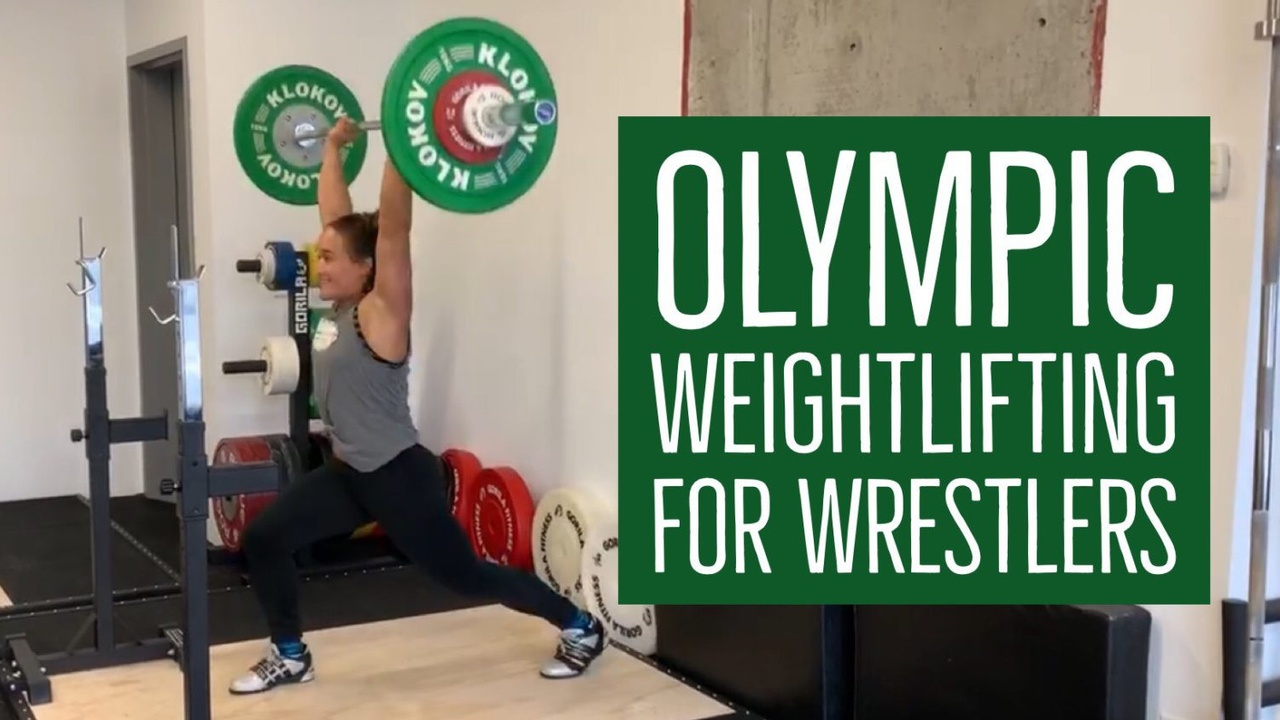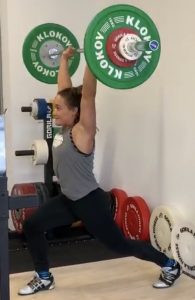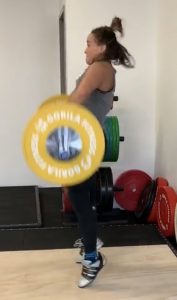
Olympic Weight Lifting for Wrestlers
By Carmen Bott
Interview by Coach Carmen Bott
Answers by Guest Coach: Jeremy Martin
Coach Bott: “Tell me about your weightlifting background - Do you compete yourself? Were you always a weightlifter?”
 Coach Jer: I have been weightlifting competitively for around 5 years. I've been fortunate in that time to improve my results enough to reach a national level. Before my time in weightlifting, I competed in powerlifting and strongman. Previous to that, I played football, rugby and basketball and then transitioned into competitive MMA for a few years. I like to think that my varied sport experience helps me to better apply training principles to athletes of all kinds.
Coach Jer: I have been weightlifting competitively for around 5 years. I've been fortunate in that time to improve my results enough to reach a national level. Before my time in weightlifting, I competed in powerlifting and strongman. Previous to that, I played football, rugby and basketball and then transitioned into competitive MMA for a few years. I like to think that my varied sport experience helps me to better apply training principles to athletes of all kinds.
Coach Bott: “How can Olympic Lifting be integrated into an Off-Mat training plan for a Wrestler? What lifts would you use? And why.”
Coach Jer: Weightlifting movements can make up a large proportion of a wrestler's off-mat strength and power training. Lifts like the power clean and power snatch, especially the hanging variations, can be primary lifts for lower body training. Jerks (both split and power variations) as well as push presses can be used as primary lifts for the upper body. Pulls, squats and dumbbell variations of the lifts can also be used as strength and accessory movements in a wrestler's program. These movements teach athletes to apply forceful acceleration through an external object (the barbell), while also maintaining proper technique and body positioning. This is the essential to wrestling, where the object of the competition is to disrupt another person's positioning while maintaining your own positional integrity.
 Coach Bott: “What do you think are the key physical benefits an athlete can gain
from the Olympic Lifts or their abbreviations?”
Coach Bott: “What do you think are the key physical benefits an athlete can gain
from the Olympic Lifts or their abbreviations?”
Coach Jer: As mentioned above, these lifts teach us to move an object with speed and aggression, while maintaining proper positioning. A well-executed hang power clean, for example, will have the individual exploding upward from an athletic position, apply as much force as quickly as possible through the barbell, then almost immediately return to and athletic "receiving" position to absorb the impact of the airborne bar. We are essentially teaching athletes to create force while also fighting the force that they created, in order to absorb impact in an optimal position. Movements like the split jerk also teach athletes to move the feet horizontally after a vertical drive, similar to switching stances or sprawling in Wrestling strength Training.
Coach Bott: “How should an athlete go about learning these lifts?”
Coach Jer: It is highly recommended that athletes find a qualified coach to instruct them in the olympic lifts. Ideally, one would find a coach that has experience in both strength and conditioning and weight lifting. This allows the coach to apply the variations of the movements that will be most effective for the athlete's performance. Some pure weight lifting coaches may not be willing to alter or abbreviate the movements due to their experience being limited to mostly pure olympic weightlifting coaching and instruction. These movements are a sport in of itself. Due to their complexity, it is often best to progress slowly and only advance the movement when technique is deemed adequate by a qualified coach. Bio: Coach Jeremy is a certified strength and conditioning coach with a master's degree in Kinesiology. He has applied his years of experience under the barbell to offer athletes a high level of expertise in wrestling strength Training, programming and technique. Jeremy owns Loaded Athletics, a facility in Vancouver, BC focused on offering intelligently designed training to athletes, competitive lifters and the general population. Jeremy collaborates with Coach Bott and is the resident Olympic Lifting Coach for The Wrestler’s Edge program.
Contact Jeremy:
Instagram: @loadedathletics @jerpicksthingsup
Facebook: Loaded Athletics
Contact Info: [email protected]





